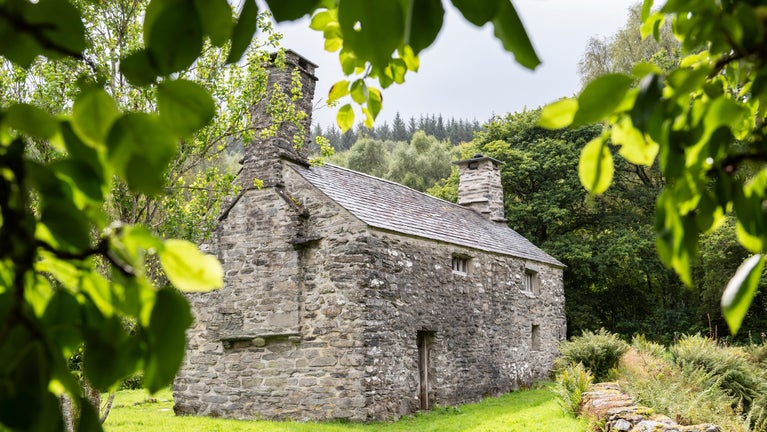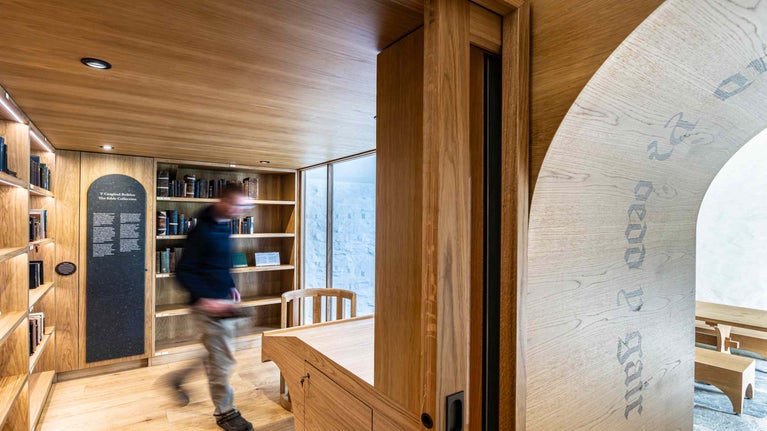Tŷ Mawr and the Wybrnant valley

Tŷ Mawr Wybrnant is the birthplace of Bishop William Morgan, whose 1588 translation of the Bible into Welsh— ‘Y Beibl Cyssegr-lan’ — ensured the survival of the Welsh language.
Wybrnant valley
According to local tradition Wybrnant meant ‘stream of the viper’. Now we think it means ‘fast-flowing stream’, from the old word ‘ewybr’, for speedy or swift.
Today, the valley feels quiet and remote, but in William Morgan’s time Wybrnant was on an old drovers’ road. These were traditional routes to walk livestock such as cattle to English markets, some as far as London. This made Wybrnant a busy place. Drovers passed with their animals and returned with money and the latest news from afar.

Origins of the Farmhouse
The earliest house on the site was a cruck-framed hall house, dating possibly from the 15th century. This is how Tŷ Mawr would have been at the time of William Morgan's birth and childhood.
At around the time William was twenty and heading off to Cambridge, his parents, John and Lowri Morgan renovated the house into what is termed today as an Eryri (Snowdonia) type house. We can come to this conclusion because the principal trusses from the roof have been dated back to around the winter of 1565, the year William left for Cambridge.
In its 1565 form, Tŷ Mawr became a fully two-storeyed house, with a chimney at either end, one serving a large fireplace in the main hall and a second corbelled out from the face of the gable wall.

Restoring Tŷ Mawr
In 1888 Tŷ Mawr was part of the Penrhyn estate and was repaired from ruin by Lord Penrhyn to celebrate the 300th anniversary of William Morgan’s translation. The farmhouse came into the care of the National Trust in 1951, together with thousands of acres of the Carneddau and Glyderau mountains and the Ysbyty estate. By then, former residents had modernised the house considerably.
A local committee was formed and Miss Myfanwy Williams of Glasgwm led the effort to open a one-room museum at Tŷ Mawr. The museum opened to the public in 1960.
To mark 400 years since the translation it was decided to rebuild the farmhouse in the original Tudor style of William Morgan’s time. This was in large part thanks to the efforts of the first curator, Iola Wyn Jones, in raising awareness and funds. Tŷ Mawr was officially reopened to visitors in 1988.

Tŷ Mawr Today
We continue to celebrate William Morgan’s translation of the Bible and its impact on Wales by working with people to shape the next chapters in Tŷ Mawr’s story.
A project worth £294,500 was completed in spring 2025 which focused on improving access and interpretation on the site, gaining a better understanding of Tŷ Mawr’s Bible collection, and carrying out essential maintenance work to tackle water ingress in the farmhouse.
Click on the link to learn more about the recent improvments at Tŷ Mawr Wybrnant: Improvements |Tŷ Mawr Wybrnant | Conwy | National Trust